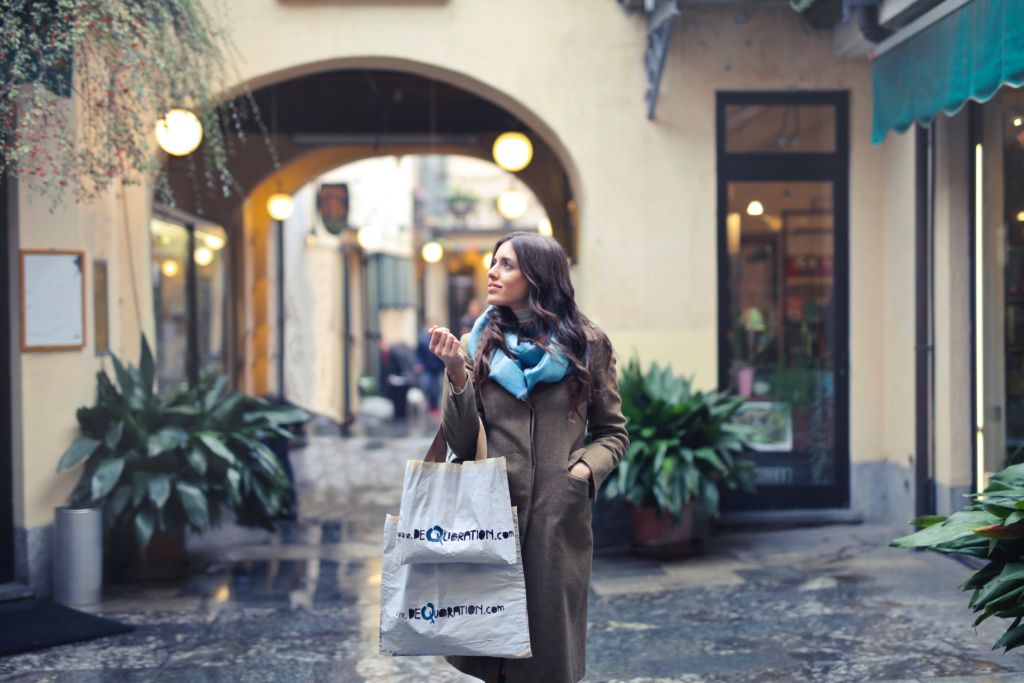
Throughout 2018 and even in the immediately preceding years, the common denominator of fashion and retailing has been volatility. During all this time I have tried, with more or less success, to shed light on the sector and industry forecasts. I must confess that it is very difficult, at times frustrating, not to clear that “thick layer of uncertainty” that covers the present and future of fashion.
During this process I have read and re-read every report that has come into my hands. I have even had reports translated from German and Japanese for the sole purpose of looking a little further, getting clarity and sharing it on this blog.
Among the reports that I have re-analyzed is that of the international consultant firm McKinsey & FOB – The State of Fashion 2019.
I can assure you that it has been productive and comforting! Experiencing Q2 2019, we can see how the forecasts made by the specialists of the international consulting firm are taking part in the reality of the sector. Although I recommend you to read the report that you can download for free in the link above, I will offer you a preview of the analysis and its conclusions.
The State of Fashion 2019
The report examines, describes and provides exhaustive information on the world economic situation, consumer shifts and disruptions in the fashion system. Below I share with you a summary of the content that constitutes the backbone of the report.

I- Economía Mundial
1. Caution for the future.
Key economic indicators with their downward movement and other destabilizing movements unfailingly generate a cautious attitude for the future.
With forecasts of a slowdown in the global economy in 2020 (there are even well-founded comments about a future world crisis), the directors of organizations have become much more cautious and are encouraged or forced to explore more aggressively new possibilities to increase productivity.
70%: Fashion managers consulted who have been concerned about the global macroeconomic outlook for this year.
2. India y su ascenso
2. India and its rise
India is slowly but surely becoming a benchmark market for world fashion. A growing middle class, with significant upward social mobility and a strong local clothing industry. Of course, international fashion players must do their best in a market that is heterogeneous and represents a major challenge from its social perspective as it is home to an educated demographic group in contact with the latest global technologies in direct relation to another part of the poor population. India, anti-apocalypse retail is an analysis of this situation and explains in depth this exciting process and why the country is heading in a direction opposite to the mature fashion markets.
690 million: the number of smartphone users in India projected for 2022. 2.3 times the number of users in 2017.
3. Trade 2.0
Contingency plans to deal with future changes in the global value chain are essential in all organizations. On the one hand, the commercialization of clothing and fashion accessories could be affected by the creation of new tariff barriers, trade disputes and current volatility and on the other hand, new opportunities are generated from the growth of South-to-South trade and the re-establishment and updates of new trade agreements.
62%: the number of McKinsey respondents who believe that variations in foreign trade policy will generate potential risks to global economic growth. This appreciation has been growing with respect to last year’s report The State Of Fashion 2018.

II- Shifts in the consumer
4. End of property
As the business model of second-hand, refurbished, repaired and rented clothing and accessories continues to evolve, the lifespan of the fashion product will become increasingly elastic. Fashion players will look and act more frequently on this business to access new market niches and consumers who are moving away from permanent ownership of clothing.
44%: this is the percentage of managers consulted who assume that the second-hand business model will be more relevant in 2019 than in 2018.
5. The awakening
The deep and genuine interest of the new generations in social and environmental causes has reached an important critical mass. This has resulted in brands being much more attentive and driven towards their goal of attracting both new conscious consumers and talent. Customers in some, but not all, markets will reward players who take a clear and solid stance on environmental and social issues beyond traditional CSR.
6.3x: the number of times they estimate that the word “feminist” will appear on home pages and in retail publications in 2018, compared to 2016.
III- The fashion system
6. Now or never
In the journey of the mobile consumer, the temporary space between the discovery of the product and its actual purchase has become a conflict zone as the current fashion consumer is much more impatient, looking to buy exactly the models they discover and they want it immediately. It is the new digital and global client.
Market players will focus on reducing this gap through optimal or shorter delivery times, having greater and faster availability of products advertised in stock and with the help of new technologies such as visual-virtual search and augmented reality.
24h: In 2018, Amazon customers in the U.S. required deliveries within 24 hours, compared to expectations of a 9-day delivery time in 1995.

7. Maximum transparency
For a long time, organizations have possessed and managed their customers’ personal data. Today, a new, more suspicious consumer wants companies to respond with maximum transparency. For companies to be able to meet this new commitment to trust that their customers demand of them, they must offer a higher level of transparency, radical transparency, in dimensions such as value for money, creative integrity and data protection.
65%: is the number of respondents who indicated “the needs of consumers to rely on product authenticity and creative originality” within the 5 main trends for this year.
8. Self-disruption
Fashion brands, even the most traditional ones, have begun to change their own business models, image and offering in response to startups and a new generation of emerging brands. The latter have grown, accelerated and gained market share thanks to declining customer loyalty to the traditional brand and a growing appetite for the new. We expect more brands to follow this path of self-disruption, which will likely have a significant impact on their operating models.
#1: Self-disruption has been ranked in that position and has remained the most prominent trend within the forecasts made by fashion executives.
9. Digital Usurpation
As the race to be the digital platform of reference for both consumers and brands grows, the major players in global e-commerce will continue to innovate, develop and add services. This will be achieved through purchases, partnerships, investments or in house R&D&I. Players who diversify their business model and ecosystem will improve their leadership over those who remain pure-players because the latter will depend exclusively on retail margins.
4x: The compound annual growth rate of fashion e-commerce retailers over traditional fashion retailers from 2013 to 2017.

10. On demand
Automation and data analysis have enabled a new generation of start-ups to achieve versatile, fast and tailor-made manufacturing. The new fashion supply chain is digital, predictive and always connected.
The mass players are the next to experiment, responding more quickly to trends and consumer demands, generating a just-in-time production, reducing excess stock and reconverting short production cycles and small batches into the new industry standard.
2018 and 2025: Different levels of aspiration for a change towards nearshoring which will double between 2018 and 2025.
Neorelocalization.
I have no doubt that this new process, which staged the return of the vertical fashion industry to nearby sourcing origins, constitutes the greatest disruption to the sector.
I have called this “new return” the “neorelocalization of fashion“. The addition of the prefix “neo” is to differentiate it from the previous ones, because unlike these, this return comes from hand in hand with robotization, automation of production processes and sustainability. Nearshoring will return, but the neorelocalization factories are nothing like those of our grandparents.
Let’s meet again in the next article!











































